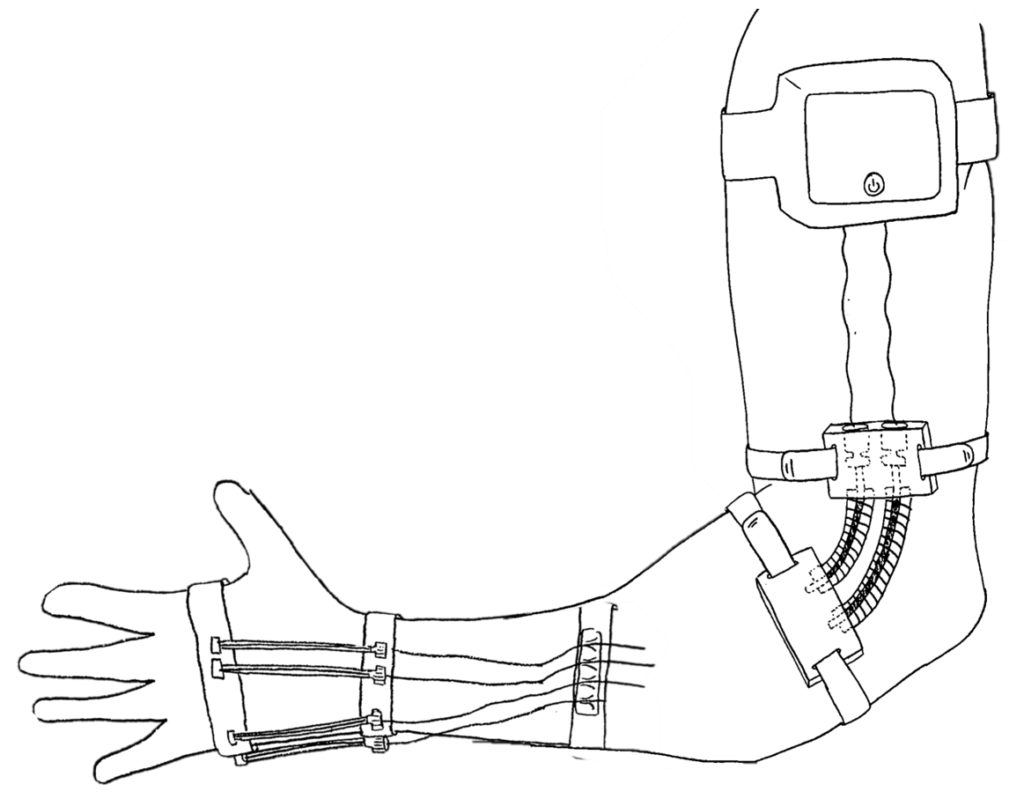Cerebral Palsy (CP) is the most common motor disability in children in the United States, affecting movement and posture during daily activities. Eighty percent of children with CP exhibit negative outcomes and delayed milestones of upper limb motion through reduced speed, limited handling of objects, and joint contracture. In order to assess the effectiveness of proposed treatments, comprehensive, quantitative, and sensitive biomechanical outcome measures are required. Current tools and equipment present limitations when applied to a clinical, pediatric population with CP. The purpose of this study is to determine the accuracy and repeatability of a fiber-optic curvature sensor (FOCUS) system to monitor elbow and wrist joint angles when compared to the gold standard 3D motion capture, in healthy adults, prior to using it to characterize upper extremity motion in children with CP.
Fiber Optic Arm Joint Sensor

